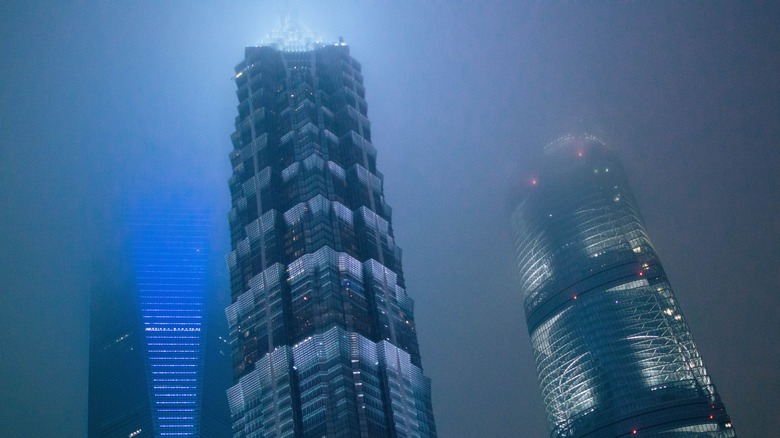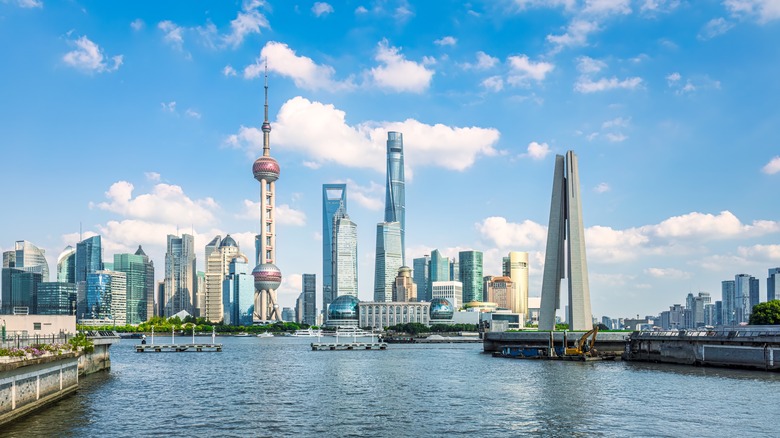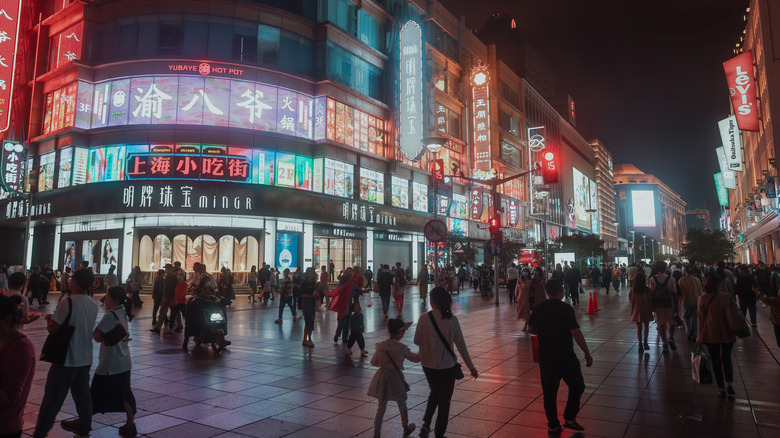Rick Steves Called This Futuristic Asian City Of Extravagant Skyscrapers 'A Jetsons World'
King of travel tips Rick Steves is usually associated with Europe, the continent he has explored consistently since his first days of traveling back in the 1970s, for which he has written numerous essential travel guides. However, his sphere of knowledge isn't just reserved to one continent. On the Rick Steves website, he recalls visiting Shanghai, China's financial center, which he describes as "a Jetsons world," harkening to the 1960's space-age animated sitcom, "The Jetsons."
Steves notes that the city has undergone a formidable transformation over the years. "Shanghai has built two thousand buildings over 100 meters tall in the last decade. With the help of what they claim is 17 percent of the world's cranes, they are throwing up office space at the rate of one Columbia Tower every two or three days." That was back in April of 2003, and the experience, coupled with Steves' impressions of the country's political and social landscape, left him with mixed feelings. His website reads: "Did Rick find it an interesting place to visit? Yes. Will Rick be doing more on China? No."
Today, Shanghai truly resembles a futuristic city, with nearly 200 skyscrapers dotting its skyline. Though it has its problems like any major city — such as overcrowding, though this is reportedly improving — Shanghai offers a microcosmic impression of China's modern history and its ambitions, making it an eye-opening place to visit for any traveler, especially those who want to catch a glimpse what cities of the future might look like. (Pro tip: be sure not to visit China during the worst time of the year.)
The stunning skyscrapers of Shanghai
Even over 20 years ago, Rick Steves was impressed by Shanghai's imposing skyscrapers, praising their "creative shapes" and what he hoped would be their "timeless elegance." Perhaps the best way to view the towers nowadays is from within the towers themselves, many of which have observation decks hundreds of stories high that really make you feel as though you have your head in the clouds.
The famous Shanghai Tower, the attractions of which include a ballroom and a concert hall, has an astonishing observation deck — the second-highest in the world at nearly 1,800 feet (only after the Burj Khalifa in Dubai) — on the 118th floor. Here, at the top of Shanghai itself, you'll be rewarded with incredible views of Jin Mao Tower, which contains a shopping mall, the Grand Hyatt Shanghai Hotel, the Shanghai World Financial Center, and countless offices, restaurants, and bars down below.
The tower also has a multimedia exhibition hall where visitors can explore the engineering feats that underpin the world-famous building and its history. Meanwhile, the Oriental Pearl TV Tower — another iconic Shanghai skyscraper just over 1,500 feet high — offers not only stunning views but also restaurants, karaoke bars, and dance halls within its walls, making the building alone feel like a city in the sky.
Shanghai's futuristic sights and Blade Runner-esque nightlife
But Shanghai's futuristic appeal isn't all up in the air. On the banks of the Huangpu River, you will find the Long Museum, a Brutalist art institution hosting numerous exhibitions of works by both traditional and modern Chinese artists. Further north is the Bund Sightseeing Tunnel, an eye-popping subterranean rail car journey and light show that will make you feel like you're in "2001: A Space Odyssey." It'll also take you to where many of Shanghai's top skyscrapers are across the river.
Sci-fi Shanghai becomes even more cinematic at night when its neon signs and bustling streets make it feel like a scene from "Blade Runner." Nanjing Road Pedestrian Street is a walkable wonderland filled with fabulous stores, bars, restaurants, and tourist attractions that will keep you entertained into the small hours. For those who want to stay in a hotel from the future, try the Shimao Wonderland Intercontinental Hotel, a five-star establishment built in a water-filled ex-quarry that has to be seen to be believed.
Looking for somewhere more remote? China's Zhangjiajie National Forest Park, which helped inspire "Avatar," is the complete opposite of Shanghai — a stunning mountainous paradise where you can relax, hike, and explore without a single skyscraper in sight.


